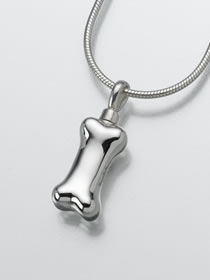 Hospice has been helping people pass more gracefully, in a calming environment, that they feel comfortable in. The term hospice care is defined as focusing on the quality of life for terminal patients. Patients that are close to the end of their lives are cared for in a nurturing environment, that focuses on their emotional, spiritual, and mental health, along with pain management. Much of the Hospice practices are based on a Budest Philosophy.
Hospice has been helping people pass more gracefully, in a calming environment, that they feel comfortable in. The term hospice care is defined as focusing on the quality of life for terminal patients. Patients that are close to the end of their lives are cared for in a nurturing environment, that focuses on their emotional, spiritual, and mental health, along with pain management. Much of the Hospice practices are based on a Budest Philosophy.
Now, a new trend has emerged, offering hospice services for pets. When you search “pet hospice” more than 20 million search results appear. The trend in this industry is not surprising. In 2018, Americans spent a record high on their pets. Americans spent $72.56 billion on their pets in 2018, which was a 4% increase from the spend of $69.51 in 2017. And, a portion of those costs is now being spent on pet hospice care.
It’s estimated that 68% of American households, or approximately 85 million families, own a pet. And, when your pet gets sick, it can be very painful to watch them suffer. Many Americans are choosing pet hospice and palliative care for their furry family members. Pet hospice offers owners a solution to ease their pet’s suffering in a gentle and comfortable way. Is pet hospice really worth it though? Or is it just a scam for pet owners to shell out more money in a time in their lives when they’re particularly vulnerable? Keep reading for a complete overview of what pet hospice offers, its benefits and downfalls, and if it’s the right decision for your pet.
What is Pet Hospice?
 Pet hospice services is a term used by more professionals these days and their idea of what “Pet Hospice” is can vary from provider to provider. However, many pet hospice providers will offer to come to your home, monitor your pet during their last few weeks or days, and prescribe medication to manage pain. Some Veterinarians offer hospice like services as an extension of their business. Your pet hospice provider will advise you when they feel is the right time to let your pet go, and will be there to euthanize the pet in the comfort of their own home. Not all pets will require euthanization, and sometimes the veterinarian is there to supervise as the pet naturally passes on.
Pet hospice services is a term used by more professionals these days and their idea of what “Pet Hospice” is can vary from provider to provider. However, many pet hospice providers will offer to come to your home, monitor your pet during their last few weeks or days, and prescribe medication to manage pain. Some Veterinarians offer hospice like services as an extension of their business. Your pet hospice provider will advise you when they feel is the right time to let your pet go, and will be there to euthanize the pet in the comfort of their own home. Not all pets will require euthanization, and sometimes the veterinarian is there to supervise as the pet naturally passes on.
A complete pet hospice service can include on-call services from the veterinarian to provide urgent care as needed, extended appointments for counseling, support for decision making, and even pet loss grief counseling and support. As well as providing nutritional support, assistance with urination and defecation, ensuring adequate hydration, helping pets move safely within their environment, keeping pets well groomed and clean, symptom management, and providing mental stimulation and loving contact with family members. 
The Benefits of Pet Hospice
One veterinarian estimates that 95% of his regular furry patients are still euthanized at the vet’s office. This means that most pets don’t die a natural death and come to a point in their lives when the owner has to make the tough decision for them. In many of these cases, it’s likely that these owners are unaware the pet hospice is an option.
There are many aspects of choosing pet hospice that is comforting. Your pet is able to pass in the comfort of their home, in an environment they feel comfortable and safe in, versus a cold table in the veterinarian’s office.
A veterinary practice is typically very loud and chaotic. There are veterinary employees running around and pets in the office making noises. This can add to a pet’s anxiety and make them stressed in their final moments before passing.
Instead, choosing a pet hospice treatment at home can make the entire process more calming. Animals and their owners feel more comfortable in a familiar environment. One company describes that some pets “can fall asleep with treats still in their mouth.”
Perhaps most important of all, pet hospice comforts the owners too. The owners can spend the entire day playing with their pet, give them their favorite treats, and dictate when it’s time to say goodbye. It removes the clinical and cold approach of going to a vet’s office and feeling as though you have to rush your goodbye because you can’t keep the vet occupied for too long.
The Downsides to Pet Hospice
The most apparent downside to pet hospice is the cost. Being able to choose pet hospice for your furry companion is a privilege that not over pet owner can afford. The cost of care can vary, typically ranging from $180 to $200, plus the cost of medications. Additionally, in-home euthanasia costs anywhere between $200 to $250. Assuming the pet medication is an average of $200, the cost of choosing pet hospice for your furry friend can range anywhere in total from $580 to $650 or more. For people choosing to participate in the additional pet hospice services, such as pet loss grief counseling, costs will be much higher. For the average American household, spending a $1,000 or more is not an easy decision especially, if it’s an unexpected expense.
A secondary possible downside to pet hospice is dealing with the decision of putting down your pet. Similar to euthanizing your pet in a veterinarian’s office, you need to decide when you are ready to let your pet go. Your pet hospice provider, or your veterinarian, can offer their expert opinions, but only you make the final decision. There may always be a question in your mind if you chose the right time to say goodbye. However, you should take comfort that if you received a medical professional’s opinion and approval, you made the right decision to end your pet’s suffering.
When It’s Time to Let Your Pet Go
Pets love us unconditionally, and it can be challenging to decide it’s time to let them go. However, if your pet is suffering, it’s time to help them. Pets don’t understand why they’re in pain, and you can’t explain it to them.
There are signs you can watch out for to understand when to let your pet go. Pets that are terminally ill can go from having a really bad day to rallying, and then sinking back to another back day. When you notice this cycle, keep a daily log and rate your pet’s comfort level to help make your decision making easier.
It’s recommended you rate your pet’s quality of life based on the following markers, known as the ‘HHHHHMM Quality of Life Scale:’
- Hurt
- Hunger
- Hydration
- Hygiene
- Happiness
- Mobility
- More good days than bad
Animals can’t always vocalize their pain and suffering, but there are signs you can watch out for. Pets that are showcasing anxious behavior such as restlessness, pacing, panting, a change in appetite or sleep, or when a friendly pet stops being social, are all signs of something being wrong.
For more information about deciding when it’s the right time to put down your pet, check out this blog post.
Honoring Your Pet: Cremation Solutions
 As your pet passes and it’s time to say goodbye, it’s so important to honor their memory. You can commemorate their memory with items such as cremation or scattering urn, a garden monument, fingerprint jewelry, or with other cremation jewelry. These items will help you feel like you have a part of your furry family member, even after they’ve left.
As your pet passes and it’s time to say goodbye, it’s so important to honor their memory. You can commemorate their memory with items such as cremation or scattering urn, a garden monument, fingerprint jewelry, or with other cremation jewelry. These items will help you feel like you have a part of your furry family member, even after they’ve left.
Cremation Solutions is a family-owned business located in Vermont but services the entire United States. Owner Jeff Staab was a Funeral Director and for over 20 years before opening up Cremation Solutions, and he has a deep understanding of what it means to lose a pet. He created Cremation Solutions so grieving families would be assisted in celebrating the lives of their loved ones and pets in special ways.

Cremation Solutions is proud to design and manufacture its own products, as well as offer products from many other artists and craftsmen from across the country. You’ll find an extensive line of products with artistic details, high craftsmanship, and fair prices. Cremation Solutions has a goal of offering 100% satisfaction for customers as they navigate through the difficult process of memorializing a pet. To view the full list of options available for honoring and remembering your pet, go to https://www.cremationsolutions.com/ or call (877) 365 – 9474 for more information.

